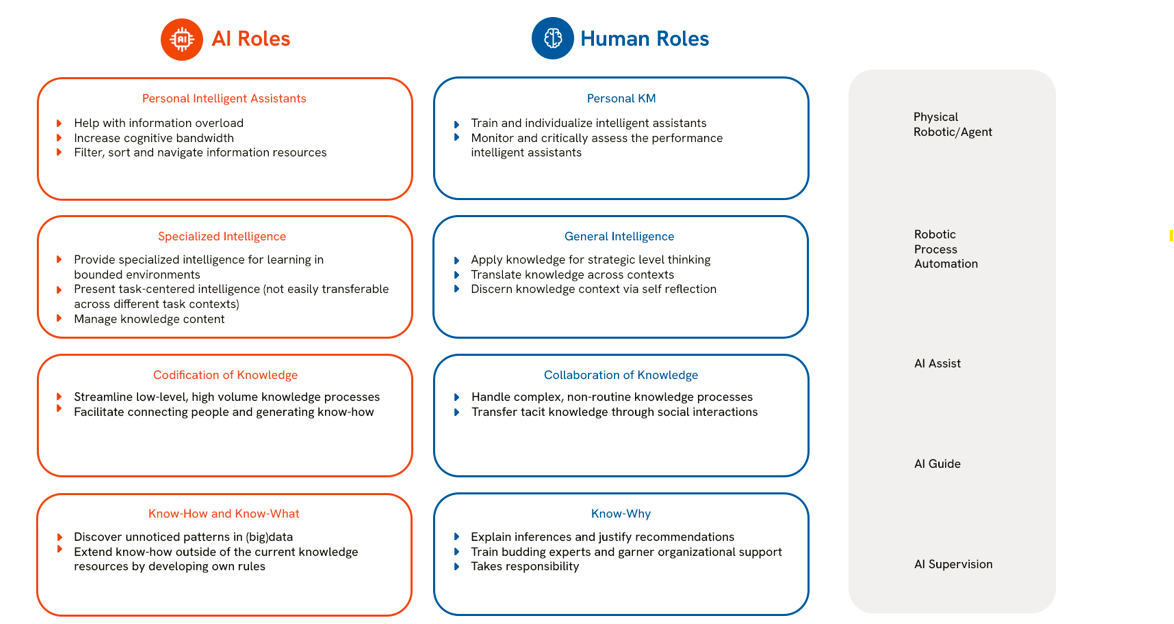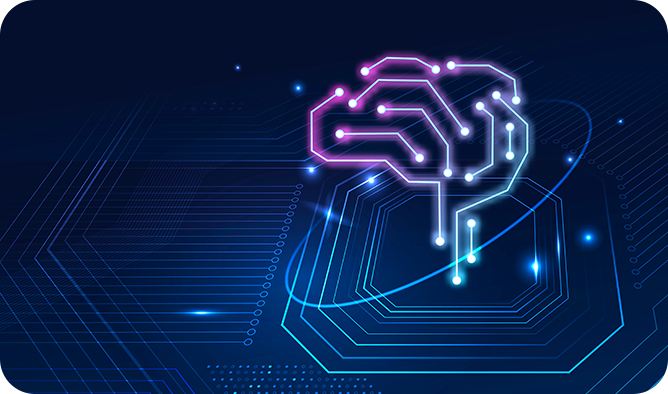Unveiling the Impact of
AI on IT Services

Areteans nurtures an environment which is conducive to the constant development of knowledge of all team members. To facilitate this, a series of inspiring and insightful sessions from industry experts have been organized by our Learning & Development department. One of these sessions were led by Dr. Snehasis Banerjee, an IIT alumnus who is an expert in Cognitive Science and AI. With experience spanning 15 years, he is presently a part of the TCS Research Team where he focuses on Intelligent Automation and Human-AI Collaboration. Let us now take a plunge into the fascinating world of AI and how it is redefining the entire IT services set-up, including the roles of humans in the IT teams.
Innovation and creativity supported by AI
In the current scenario, a professional relationship between a customer and the provider of services, including IT services is not merely operational or transactional. There is a scope of knowledge transfer and in an ideal situation, the building of new “models” based on the knowledge assimilated.
Let us see how Discovery and Invention undergoes a sophisticated transformation to deliver Innovation and Creativity in projects- which should remain the goal for any service provider to ensure client delight.


Understanding the concept of “models” to decode AI-based problem solving
The projected rise of the AI market in 2030 is estimated to be USD 826.73 Bn. This exponential growth is supported by the generation of new models, born out of the need of problem solving in multiple scenarios.
Whenever we are trying to solve an AI problem, we need to understand what a model is. Models are the formal representation of a system which are the fundamental building blocks of the creation of AI-based solutions.
To understand why models form the fundamental of AI generation, it is important to remember the following:

To understand how models are formed, let us take an example. Suppose we are taking an exam, and there are multiple options for the correct answer, A, B, C, and D. You don’t know the answer and are think of marking something random. That is just a guess and has high probability of error.
But then you see more than one person ticking Option B, so you mark B as well. This is an educated guess or a hypothesis. Now it was found when the results were published that all the students who had marked B obtained good marks. So that becomes a model for that exam.
Then it was found that in that college for all exams, whenever people are marking B, they are getting good marks. This then becomes a theory. Now if all reputed colleges around the world also show the same trend wherein people marking B are getting good marks, it becomes a law.
However, there is a difference between the physical world and the mathematical world. In mathematics, we have theorems, which are derived from axioms which cannot be challenged.
Currently, the development of AI is stuck in the model phase in the journey of a guess becoming a law. We always start with some hypothesis, test for a particular use case, and we get a model that solves that problem.
AI Learning Algorithms have three parts: Representation, Evaluation and Optimisation. In a “connectionist” type of approach to Machine Learning, Neural Networks form a part of the Representative step, Squared Errors are a part of Evaluation, and Gradient Descent is a part of the Optimisation step.
AI in the IT Landscape
We already have AI taking over stock trading, journalistic writing, financial advising and we also have AI-guided disease diagnosis. What now? How are the building blocks of AI and the building blocks of the IT sector fitting in seamlessly together?
To understand that, we have to acknowledge the evolution of science. Thousand years ago, science was experimental, what followed was a few centuries of theoretical science, a few decades of computational science and we have now reached the age of data-driven science. Scientists are overwhelmed with data sets from multiple sources- captured by instruments, generated by stimulations, and generated by sensor networks.
In the IT landscape, the fundamental blocks of Statistical Analysis or Machine Learning, which are Generative and Descriptive fit into the entire system seamlessly. The generative and descriptive models can be fused with the following types of analytics that find use in the IT domain.

Descriptive
Gives us an account of what has already occured over the past days, months and years

Real-Time
Gives insight into up-to-the-minute data (requires sophisticated data management skills and processes).

Diagnostic
Looks at why something happened: what went wrong and what went right?

Predictive
Looks at what might happen in the future based on past results, driving future outsomes.

Prescriptive
Provides guidance on what to do next.
Types of analytics in the IT domain
In a complex workflow, which involves human stakeholders like employees, business partners, customers, suppliers and others- AI can be fed into blocks like A2A and B2B Integration, data integration, business process management, IoT integration, real-time data sync etc.
Levels of AI Intervention in the workflow
The process of human and AI roles being clearly demarcated in the IT landscape has already started. Very soon there might come a day when the intervention of traditional coders would only be needed in the case of debugging. Human-AI partnerships are going to be the future of work, where unassisted robots might only need human validation or approval to complete a task. In Generative AI tools like ChatGPT, changing even one word can generate a completely different answer. Therefore, some level of checks and balances is necessary.
Let us look at the below figure to understand where we stand vis-à-vis AI and human co-existence in the IT field and what the future might look like:

Human-AI Role Demarcation in the IT field
Currently, we are at a stage where physical robots/agents and humans are co-existing in the same space with not much intermingling. While a way has been paved for AI assistance in human roles, the next inevitable step is where AI acts as a guide. Still in development, this model will make humans ask AI for predictive guidance before proceeding on a workflow step. The last stage would be AI supervision of human tasks, with/ without letting the human know that they have made an error.
Business Process Management with Pega
Workflow automation function Pega, when integrated with cloud, can make the AI integration process into Business Process Management feel hassle-free and seamless. Pega BPM can be used in diverse industries including healthcare, financial services, energy, media, manufacturing, retail, transportation, hospitality and much more.
Here is a quick snapshot of the Pega BPM Methodology:
Initiating with quick wins ->Defining project parameters and measurements ->Building iteratively, monitoring and analyzing ->Experimenting, collaborating, and improving ->Promoting best practices ->Continuous and automatic documentation

Embracing the Future of AI in IT Services
The integration of AI into IT services represents a transformative shift in how businesses operate, innovate, and deliver value. As highlighted by Dr. Snehasis Banerjee’s insights, the journey from data to models, and ultimately to intelligent automation, is reshaping the landscape of IT. AI’s capacity to handle large datasets, create predictive models, and streamline complex workflows is paving the way for a new era of efficiency and creativity. By leveraging AI’s capabilities, IT teams can focus more on innovation and less on repetitive tasks, leading to enhanced client satisfaction and business success.
As we move forward, the collaboration between humans and AI will become more seamless and intuitive, with AI not just assisting but also guiding and supervising tasks. This paradigm shift underscores the importance of adapting to new technologies and methodologies to remain competitive and relevant in the industry.
In conclusion, the future of IT services lies in the harmonious integration of human ingenuity and AI-driven automation. Embracing this future will require a commitment to continuous learning, experimentation, and adaptation. The journey is just beginning, and the possibilities are boundless.
Contact us today to begin your transformation journey.
